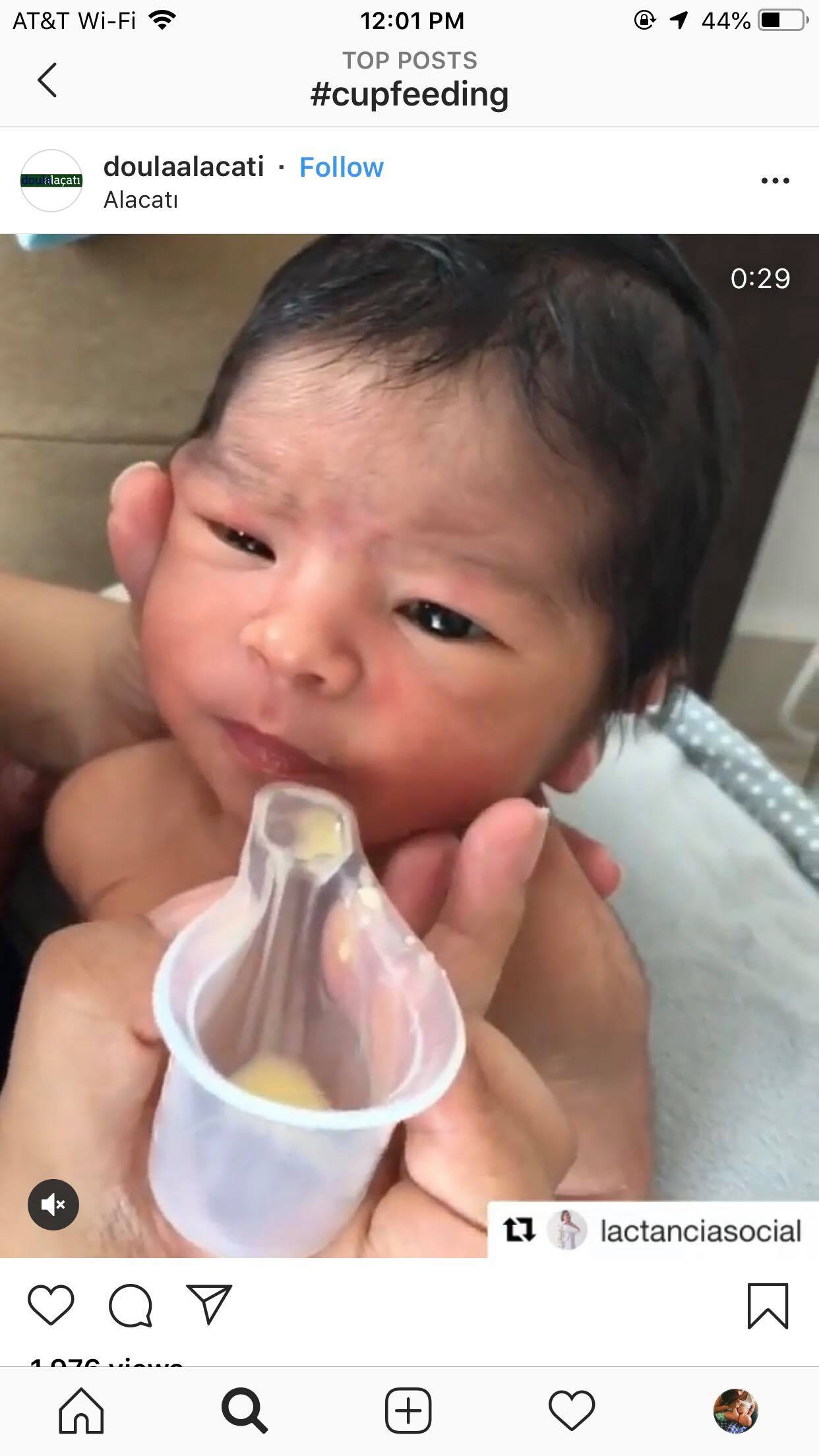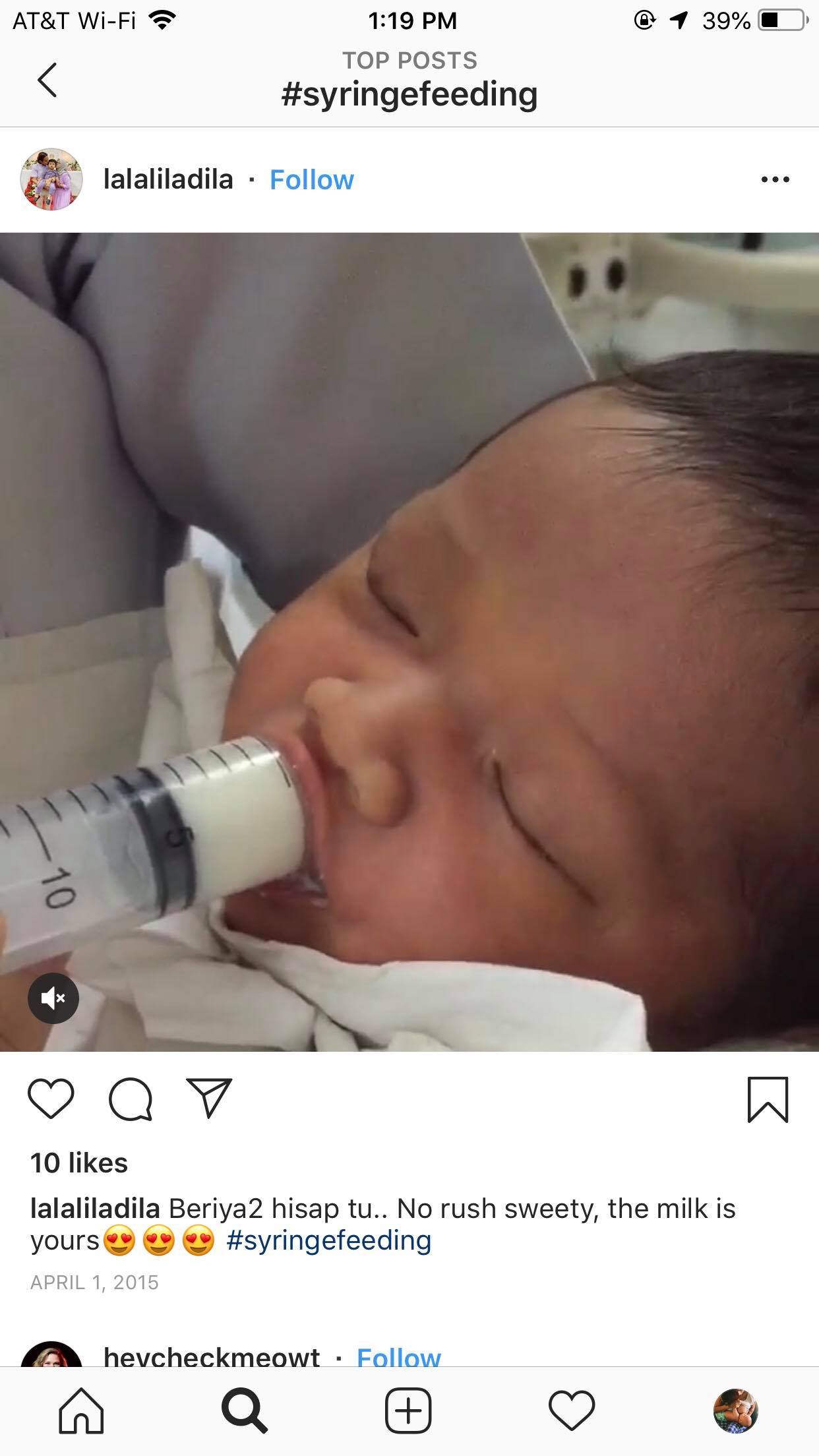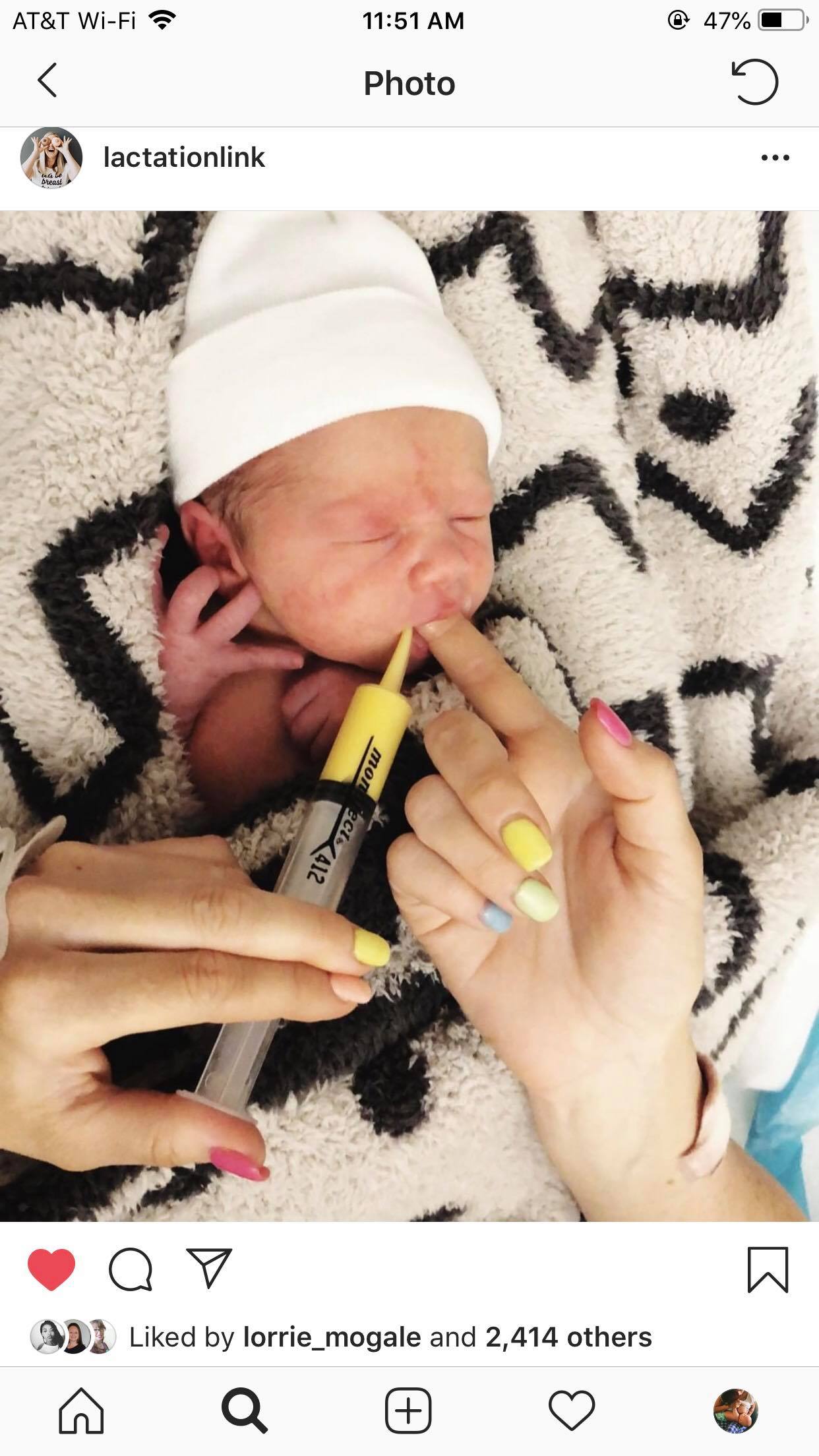A complete list to feeding devices: Which one is right for you?
You’ve got breasts, you’ve got bottles, but what other ways are there to feed a baby?
In today’s blog, I am going to introduce you to ALL of the possible feeding methods and the pros and cons to each approach.
My goal is that you will never have to worry about how your baby will receive your milk during times of separation, even if they don’t take a bottle.
And if you need to supplement with your expressed milk, donor milk, or formula, you can find the best tool to meet your needs and put you closer to reaching your breastfeeding goals.
A little disclaimer, though it's ultimately up to you and your partner on which feeding method you choose, each of these methods (including bottle feeding) require instruction and practice to ensure that babies are fed adequately and safely.
Luckily all methods are relatively easy and with a bit of practice, feeding your baby in any situation will feel second nature to you!
Types of feeding devices
There are two main categories feeding devices fall into; alternative feeding devices and at-breast supplementers.
Alternative feeding devices
Alternative feeding devices are indicated whenever you and your baby are separated or if your baby can’t feed at the breast/chest well.
If your baby is not latching at all, then an alternative feeding device is clearly needed, whereas, if your baby can latch but has transfer issues requiring additional milk, you can provide that either via an alternative feeding method or using an at the breast supplementer.
Bottles
Bottles are the most common alternative feeding device. Because they are culturally acceptable, widely available, and rather inexpensive, most parents automatically consider bottles if not directly breastfeeding. Bottles provide a simple, convenient, mess-free way to feed your baby when not breastfeeding.
The accessibility of bottles, however, and the seeming ease of use, often leads parents to choose the wrong type of bottle or to using bottles in a manner that leads to harder breastfeeding for their baby.
Bottle feeding requires your baby to use different muscles to feed effectively, and long term use can impact their oral development and dentition. The fact that babies need to learn how to feed on a bottle, while they are still learning how to breastfeed, means that a percentage of babies will develop poor feeding habits at the breast. This may result in pain or discomfort for you or transfer issues from ineffective nursing.
Additionally, the speed at which most bottles flow may lead to overfeeding and oxygen desaturation. This is why paced bottle feeding is ultra important and something I will cover more in depth in a future post.
Cons
Often interferes with breastfeeding ability in babies that have breastfeeding challenges
Too many options and little to no guidance on choosing the right bottle for baby’s feeding ability
Fast flow can cause oxygen desaturation, overfeeding
Can impact oral development and increases the risk of oral malformation
Pros
Widely available
Culturally accepted
Simple to use
Faster feeding times than other devices
Relatively inexpensive
Cup feeding
A cup is a device that falls under the “sipping/lapping methods” of feeding. I will cover some other tools that fall into this category following this.
In general, the pro’s and cons for cup feeding applies to all of the devices that comprise the sipping/lapping groups so jump to the end of this section to if you want to read the quick recap for all the following devices.
Compared to some of the other feeding device options, you, like most parents, might have the most hesitation regarding cup feeding. Many parents either envision using a full-sized cup to feed their baby or worry about pouring too much liquid into their baby’s mouth and overwhelming them, which gives them pause.
In reality, cup feeding is a great feeding tool that allows babies to practice the skills needed for effective breastfeeding. It’s inexpensive, and most people already have an appropriate sized cup (medicine cup or shot glass) on hand.
Here’s an image from Instagram showing a baby being cup fed.
And because it makes little sense to write a full description for the following devices which are variations on the same concept, here are images of the other devices in action.
Paladai aka (a cup with a spout)
This device often is used in more of a pouring manner and studies have shown that this has lower rates of spilling when compared to cup feeding. With that said, the technique is, and there may be a higher learning curve to ensure you’re following your baby’s cues as they drink.
Bowl
As you can see, any device that holds milk and is small enough to control will work!!
Syringe
Finger feeding
Finger feeding is less of a “sipping/lapping method,” but It doesn’t fall into the “at the breast” feeding devices either. Generally speaking, finger feeding often is either syringe feeding with a finger inserted in the baby’s mouth or uses more of components of the at-breast supplementation attached to a finger.
Which style you choose will depend on your baby’s needs and which method you feel most comfortable with.
Cons
Some milk may be lost due to spilling if poured
Requires some training/demonstration to avoid feeding problems
Requires longer feeding times
Pros
Easy to clean
Widely available
Inexpensive
Can make the transition to the breast easier
Requires usage of oral muscles in a manner more similar to breastfeeding
Baby’s can manage the rate of flow better
Temporary solutions
At-breast/chest supplementation devices
At-breast supplementation devices also can be broken down into subparts: Suction required and suction not required.
All the commercial feeding devices are suction required, as there are currently no manufacturers making the alternative kind.
Though many parents are familiar with Medela's Supplemental Nursing System, there are many options available for purchase. A more inexpensive and convenient option is to make your own, which can be done quickly using a 5 -french feeding tube and a cup/bottle.
At-breast feeding devices aka “feeding tube devices” aka “nursing supplementers” have the benefit of providing additional milk for babies who can latch well but may have challenges transferring or weight gain issues, while stimulating the breast to increase/maintain milk production. This is especially true for babies with special needs (cleft palate, Down syndrome, Cardiac issues) or if you’re inducing lactation/relactation.
If your baby is easily frustrated at the breast due to flow or supply issues but needs help in their feeding ability, an at-breast feeding device can help your baby learn to suck more actively and consistently.
One of the biggest cons of tube feeding is that it often takes a bit of prep, which can be a challenge when out in public. Many parents may also find using them stressful and time-consuming. Also, of all of the feeding devices mentioned in this whole post, at-breast feeding devices have the most considerable possibility of error. If not used properly, there may not be enough suction generated for your baby to get the extra milk which defeats the purpose of its use or your baby may get a high rate of flow without having to use any of the oral mechanics they need while at the breast.
<3<3
Cons
Requires special purchases (feeding tube)
Commercial devices can be expensive
Use may be cumbersome, stressful and time-consuming
If misused babies may suck on the tubing like a straw or get little milk from the device
If tape is used often, it can cause skin irritation
Pros
Reduces feeding time by reducing or eliminating additional time to feed supplementation after breastfeeding
Reinforces breastfeeding
Can improve sucking skills in some babies
Stimulates milk production
A variety of ways to use them/range of options
I hope this post helped introduce you to the variety of feeding options available to you. If you still have questions about which feeding device to meet your needs best or if you have feeding challenges you want to overcome, please contact me today at (210)763-0548, or you can shoot me a message . I would love to help guide you through your struggles.
If you’re not following me already, please jump over to my Instagram to check out all the neat things I post there.







